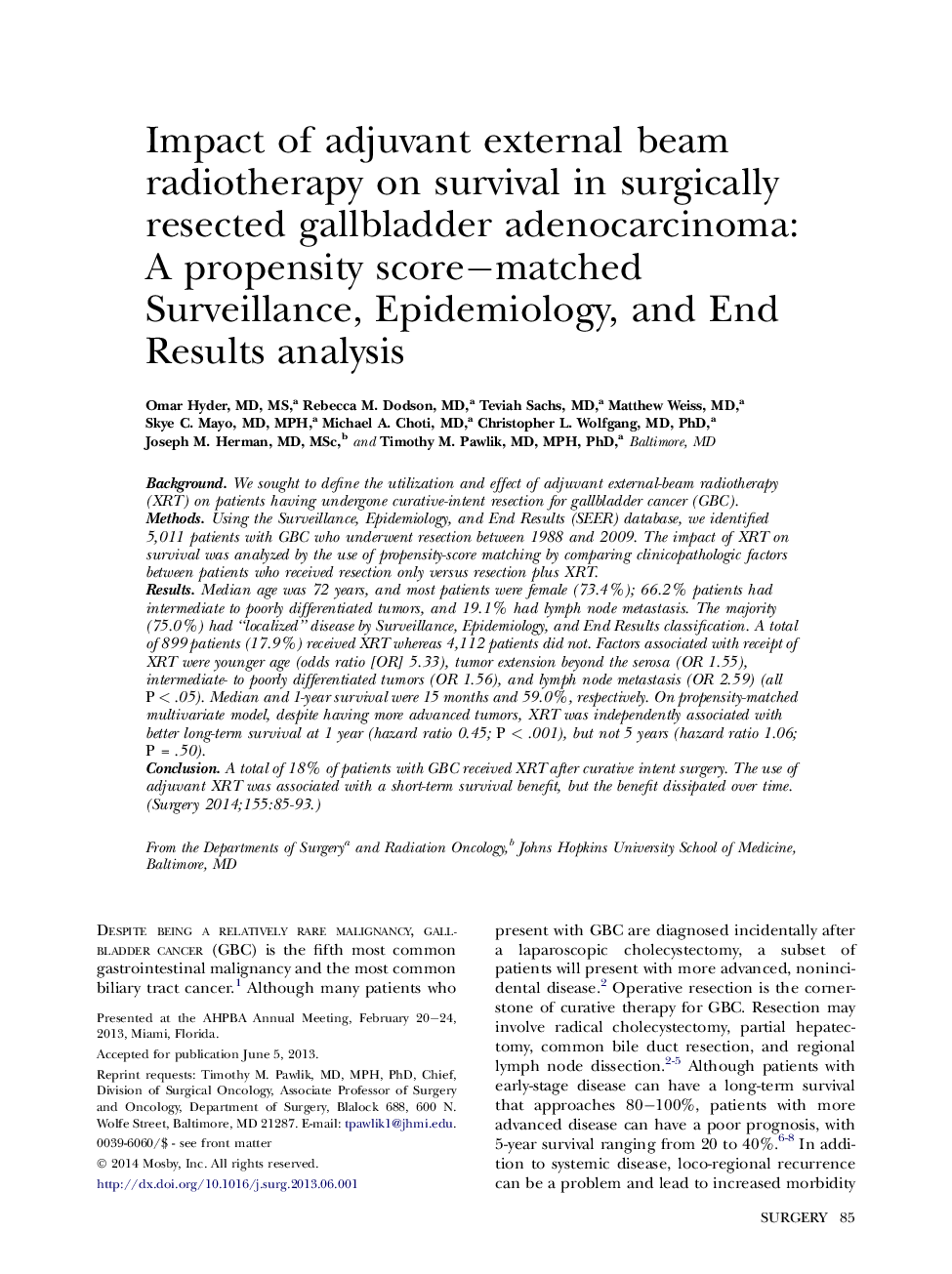| Article ID | Journal | Published Year | Pages | File Type |
|---|---|---|---|---|
| 4306862 | Surgery | 2014 | 9 Pages |
BackgroundWe sought to define the utilization and effect of adjuvant external-beam radiotherapy (XRT) on patients having undergone curative-intent resection for gallbladder cancer (GBC).MethodsUsing the Surveillance, Epidemiology, and End Results (SEER) database, we identified 5,011 patients with GBC who underwent resection between 1988 and 2009. The impact of XRT on survival was analyzed by the use of propensity-score matching by comparing clinicopathologic factors between patients who received resection only versus resection plus XRT.ResultsMedian age was 72 years, and most patients were female (73.4%); 66.2% patients had intermediate to poorly differentiated tumors, and 19.1% had lymph node metastasis. The majority (75.0%) had “localized” disease by Surveillance, Epidemiology, and End Results classification. A total of 899 patients (17.9%) received XRT whereas 4,112 patients did not. Factors associated with receipt of XRT were younger age (odds ratio [OR] 5.33), tumor extension beyond the serosa (OR 1.55), intermediate- to poorly differentiated tumors (OR 1.56), and lymph node metastasis (OR 2.59) (all P < .05). Median and 1-year survival were 15 months and 59.0%, respectively. On propensity-matched multivariate model, despite having more advanced tumors, XRT was independently associated with better long-term survival at 1 year (hazard ratio 0.45; P < .001), but not 5 years (hazard ratio 1.06; P = .50).ConclusionA total of 18% of patients with GBC received XRT after curative intent surgery. The use of adjuvant XRT was associated with a short-term survival benefit, but the benefit dissipated over time.
